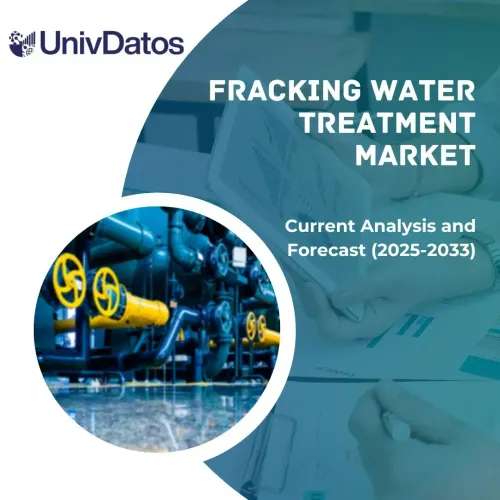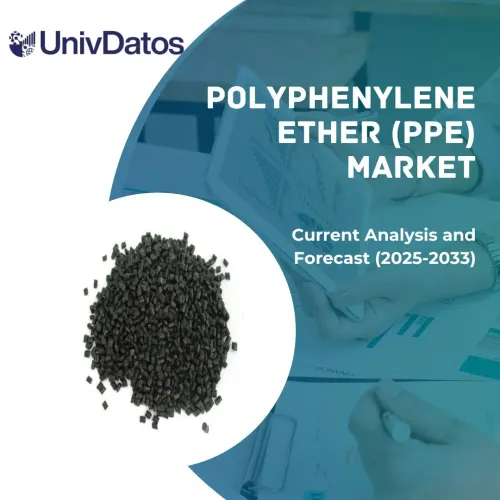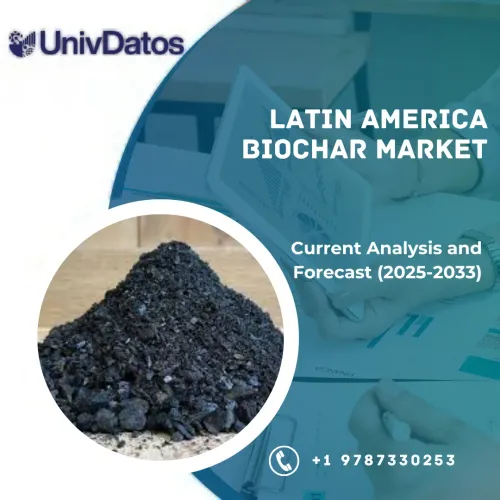- Home
- About Us
- Industry
- Services
- Reading
- Contact Us
Latin America Biochar Market: Current Analysis and Forecast (2025-2033)
Emphasis By Technology (Pyrolysis, Gasification Systems, and Other Technologies), By Application (Agriculture, Animal Farming, Metallurgy, Industrial Uses, and Other Applications), By Country (Mexico, Brazil, Argentina, Chile, Rest of Latin America)

Latin America Biochar Market Size & Forecast
The Latin America Biochar Market was valued at USD 320 million in 2024 and is expected to grow at a strong CAGR of around 14.1% during the forecast period (2025- 2033F). The Latin America Biochar market has been supported by increasing government policies as well as increasing focus from the agriculture sector. As the focus on sustainability in agriculture, animal farming, and industrial applications is extensively growing, the demand for the biochar market is further anticipated to rise in the coming years.
Latin America Biochar Market Analysis
Biochar is a stable and carbon-rich substance formed through heating of biomass like crop residues, pruning, or sawmill byproducts under low oxygen conditions. As it is applied to the soils, it improves the structure, increases the cation exchange capacity, improves water retention, and diminishes nutrient losses. It is also dissolvable in building products and filtration media, and it can also be measured and credited as long-lasting carbon storage.
The Latin American market is being lifted by several forces. Farming requires substances that yield during periods of drought or soil erosion, and biochar provides quantifiable benefits when used with compost or mineral fertilizers. Cities and forestry centers will require a method to dispose of biomass through burning and landfills; hence, the conversion of residues into biochar reduces the costs of disposal and the chances of methane leakage, in addition to producing marketable goods. Corporate customers are broadening the procurement of long-lasting carbon removals that bring in a premium revenue stream in the confirmed projects. The presence of sugarcane mills, sawmills, and coffee processors reduces the logistics of the feedstock and increases uptime through the co-location of the reactors.
Additionally, many of the companies are entering into biochar production in line with the goals to reduce carbon emissions. For instance, in 2024, NetZero, a France-based carbon removal company, received USD 19.5 million in new funding from STOA Infra and Energy with an aim to expand the company’s presence in Brazil.
Latin America Biochar Market Trends
This section discusses the key market trends that are influencing the various segments of the Latin America Biochar market, as found by our team of research experts.
Residue-to-biochar programs gaining policy support:
Biochar is beginning to be recognized by governments and development agencies as an infrastructure solution, rather than a niche farm input, in Latin America. New city and regional initiatives direct the crop residues, pruning, and sawmill byproducts to certified biochar, matching the landfill diversion targets with soil restoration and carbon elimination. Public institutions are also testing biochar to landscape urban areas and rehabilitate post-fire areas, and agriculture ministries are testing co-funding models that provide equipment grants with technical assistance to cooperatives. Concessional finance is being provided by development banks and innovation agencies to de-risk early plants and results-based funding. With the standards of monitoring and permanence becoming more mature, the regulators are connecting the residue management, reduction of methane, and the issuance of carbon credits. What is obtained is a more straightforward route to waste management requirements for bankable biochar projects supporting food systems and cities.
In 2025, the Governing Board of the Integrity Council for the Voluntary Carbon Market (Integrity Council) approved the Climate Action Reserve US and Canada Biochar Protocol Version 1.0 as meeting its high-integrity Core Carbon Principles (CCP) and Mexico Forest Protocol Version 3.0 as CCP-approved pending remedial action.
Key Market Segmentation:
This section provides an analysis of the key trends in each segment of the Latin America Biochar market report, along with forecasts at the country and regional levels for 2025-2033.
Pyrolysis has shown promising growth in the Biochar Market.
The Latin America biochar market is classified into pyrolysis, gasification systems, and other technologies based on technology. Among them, the pyrolysis segment has occupied the largest market share. Among the main aspects that have helped the market to grow are flexibility of the feedstock through crop residues, forestry waste, and urban green waste; the increased fixed-carbon outputs that can be converted into higher saleable amounts of biochar per ton of biomass; the modular nature of the reactor design with low capex and faster commissioning; the agglomerate reactor capability to be located at the mills and create consistent supply and waste-heat capture; the consistent quality of products, which enhances agronomic performance and carbon crediting.
The agriculture category dominates the Latin America Biochar Market.
Based on applications, the Latin America Biochar market is segmented into agriculture, animal farming, metallurgy, industrial uses, and other applications. Of these, the agriculture category has held a notable market share. Owing to the rising application of biochar in farming and the increasing fertility through the addition of carbon in the soil, the demand has notably risen.
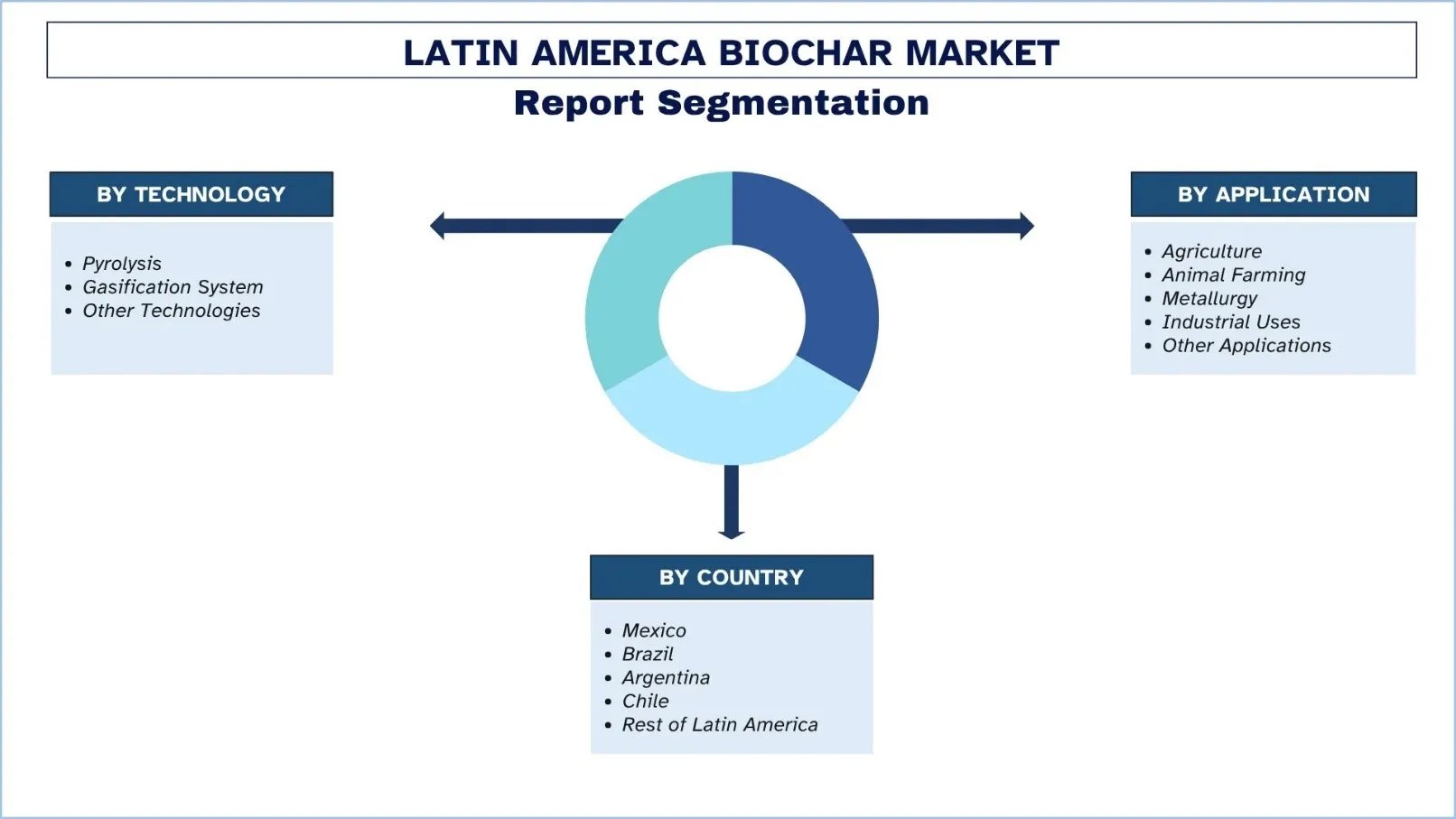
Brazil is expected to grow at a considerable rate during the forecast period.
Brazil is developing as the anchor market in Latin America with biochar due to the ample availability of sugarcane bagasse, timber residues, and municipal green waste. Continuous reactor developers are collocating mills with continuous reactors to obtain feedstock, recycle waste heat, and provide soil products to pasture and row crops. The additional revenue stream brought by the interest of corporate carbon buyers and the debate on the national carbon market and climate finance enhances the level of bankability. Engineered biochar is also being tested by early adopters in concrete and asphalt. The major limitations will be grid reliability in internal states, port logistics, and uneven permitting.
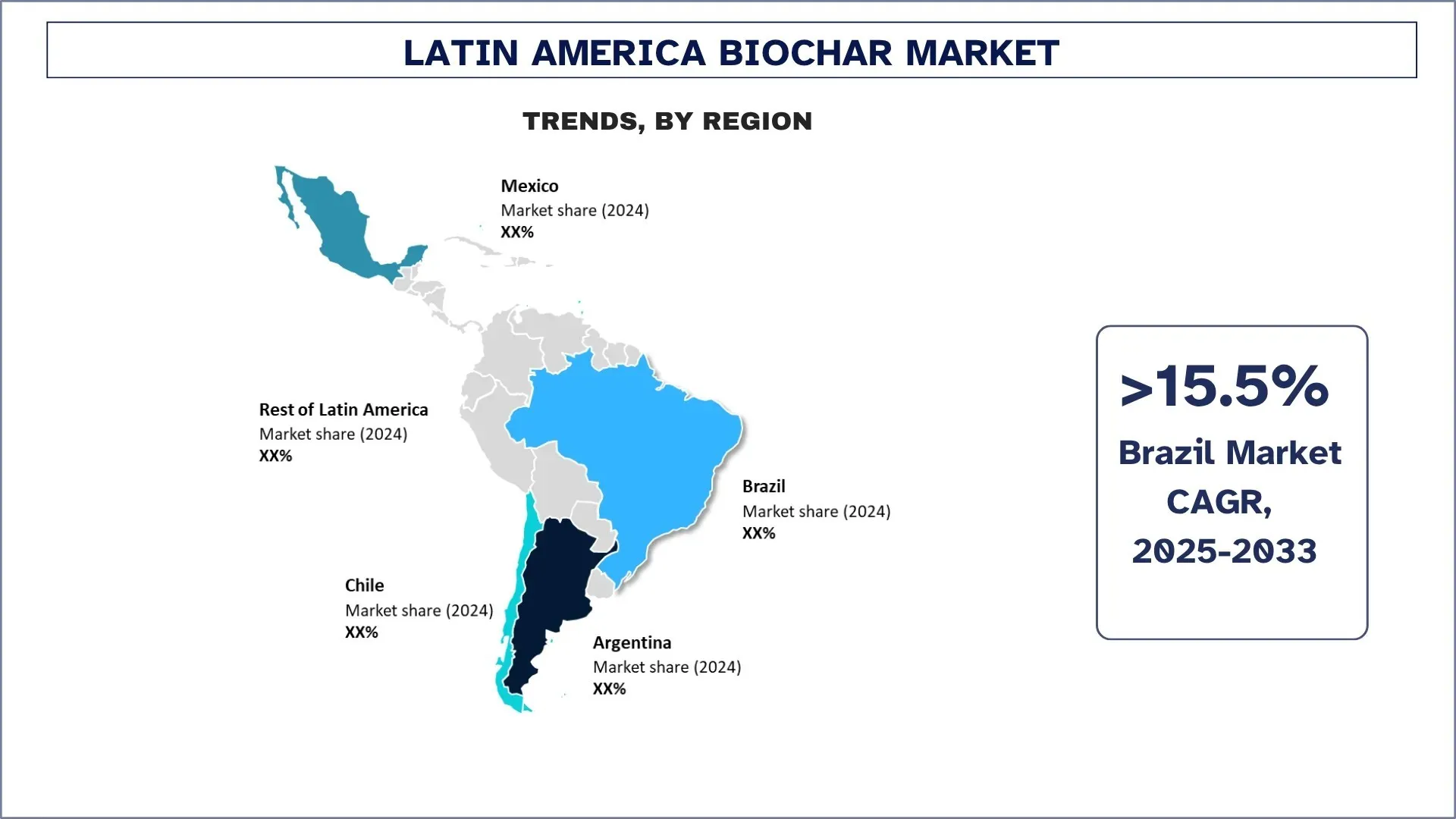
Latin America Biochar Industry Competitive Landscape:
The Latin America Biochar market is competitive, with several global and international market players. The key players are adopting different growth strategies to enhance their market presence, such as partnerships, agreements, collaborations, new product launches, geographical expansions, and mergers and acquisitions.
Top Latin America Biochar Companies
Some of the major players in the market are ArcelorMittal BioFlorestas, Aperam BioEnergia, NetZero, Pyrogreen (Singoo), PACIFIC Biochar, ArSta Eco, Airex Industries, Carbon Gold, and Klimate ApS.
Latin America Biochar Market Report Coverage
Report Attribute | Details |
Base year | 2024 |
Forecast period | 2025-2033 |
Growth momentum | Accelerate at a CAGR of 14.1% |
Market size 2024 | USD 320 Million |
Country analysis | Mexico, Brazil, Argentina, Chile, Rest of Latin America |
Major contributing Country | Brazil is expected to dominate the market during the forecast period. |
Companies profiled | ArcelorMittal BioFlorestas, Aperam BioEnergia, NetZero, Pyrogreen (Singoo), PACIFIC Biochar, ArSta Eco, Airex Industries, Carbon Gold, and Klimate ApS. |
Report Scope | Market Trends, Drivers, and Restraints; Revenue Estimation and Forecast; Segmentation Analysis; Demand and Supply Side Analysis; Competitive Landscape; Company Profiling |
Segments Covered | by Technology, by Application, by Country |
Reasons to Buy the Latin America Biochar Market Report:
The study includes market sizing and forecasting analysis confirmed by authenticated key industry experts.
The report briefly reviews overall industry performance at a glance.
The report covers an in-depth analysis of prominent industry peers, primarily focusing on key business financials, type portfolios, expansion strategies, and recent developments.
Detailed examination of drivers, restraints, key trends, and opportunities prevailing in the industry.
The study comprehensively covers the market across different segments.
Deep dive Country-level analysis of the industry.
Customization Options:
The Latin America Biochar Market can further be customized as per requirements or any other market segment. Besides this, UnivDatos understands that you may have your own business needs; hence, feel free to contact us to get a report that completely suits your requirements.
Table of Content
Research Methodology for the Latin America Biochar Market Analysis (2023-2033)
We analyzed the historical market, estimated the current market, and forecasted the future market of the Latin America Biochar market to assess its application in major countries. We conducted exhaustive secondary research to gather historical market data and estimate the current market size. To validate these insights, we carefully reviewed numerous findings and assumptions. Additionally, we conducted in-depth primary interviews with industry experts across the Biochar value chain. After validating market figures through these interviews, we used both top-down and bottom-up approaches to forecast the overall market size. We then employed market breakdown and data triangulation methods to estimate and analyze the market size of industry segments and sub-segments.
Market Engineering
We employed data triangulation techniques to finalize the overall market estimation and derive precise statistical numbers for each segment and sub-segment of the Latin America Biochar market. We split the data into several segments and sub-segments by analyzing various parameters and trends, by Technology, by Application, and by country within the Latin America Biochar market.
The Main Objective of the Latin America Biochar Market Study
The study identifies current and future trends in the Latin America Biochar market, providing strategic insights for investors. It highlights Country-level market attractiveness, enabling industry participants to tap into untapped markets and gain a first-move advantage. Other quantitative goals of the studies include:
Market Size Analysis: Assess the current forecast and market size of the Latin America Biochar market and its segments in terms of value (USD).
Latin America Biochar Market Segmentation: Segments in the study include areas by Technology, Application, and by
Regulatory Framework & Value Chain Analysis: Examine the regulatory framework, value chain, customer behavior, and competitive landscape of the Latin America Biochar industry.
Country Analysis: Conduct a detailed Country analysis for key areas such as Mexico, Brazil, Argentina, Chile, and the Rest of Latin America.
Company Profiles & Growth Strategies: Company profiles of the Latin America Biochar market and the growth strategies adopted by the market players to sustain the fast-growing market.
Frequently Asked Questions FAQs
Q1: What is the Latin America Biochar market’s current market size and growth potential?
The Latin America Biochar market was valued at 320 million in 2024 and is expected to grow at a CAGR of 14.1% during the forecast period (2025-2033).
Q2: Which segment has the largest share of the Latin America Biochar market by Technology?
The Pyrolysis segment has held the major market share due to increased fixed-carbon outputs that can be converted into higher saleable amounts of biochar per ton of biomass.
Q3: What are the driving factors for the growth of the Latin America Biochar market?
• Soil regeneration & yield pressure in agriculture: Farmers are turning to biochar to restore degraded soils, retain moisture, and lift crop productivity under climate stress.
• Opening regulated & voluntary carbon markets: Crediting pathways (compliance and voluntary) improve project economics, creating new revenue streams for biochar producers.
Q4: What are the emerging technologies and trends in the Latin America Biochar market?
• Residue-to-biochar programs gaining policy support: Incentives to valorize agri-residues (e.g., sugarcane, palm, cacao, coffee) are accelerating waste-to-biochar deployment and grid-adjacent heat/power use.
• From pilots to industrial scale in tropical value chains: Modular, continuous kilns and standardized MRV are enabling multi-site rollouts across plantation hubs, integrating biochar into fertilizer blends and soil-amendment services.
Q5: What are the key challenges in the Latin America Biochar market?
• Credit issuance timing & MRV complexity: Lengthy verification cycles, heterogeneous baselines, and data collection costs delay cash flows and raise project risk.
• Policy & financing execution risk: Fragmented regulations, permitting bottlenecks, and currency/interest-rate volatility can slow project delivery and complicate capital stacking.
Q6: Which country dominates the Latin America Biochar market?
Brazil dominates the Latin American Biochar market due to a large agricultural sector and animal farming applications for biochar.
Q7: Who are the key players in the Latin America Biochar market?
Some of the top Biochar companies in Latin America include:
• ArcelorMittal BioFlorestas
• Aperam BioEnergia
• NetZero
• Pyrogreen (Singoo)
• PACIFIC Biochar
• ArSta Eco
• Airex Industries
• Carbon Gold
• Klimate ApS
Q8: What are the opportunities for companies within the Latin America Biochar market?
• Premium, high-integrity credits through new methodologies: Next-gen biochar CDR protocols (conservative baselines, leakage control, durability testing, digital MRV, and co-benefit accounting) enable credits that meet ICVCM/SBTi expectations and command price premiums. Structures like pre-paid offtakes, forward contracts, and portfolio aggregation for smallholders can unlock project finance and shorten payback periods.
• Circular-economy plays using local residues: Co-locating pyrolysis with agro-industrial hubs (sugarcane bagasse, coffee pulp/husk, cacao shells, rice husk, palm and forestry residues) converts waste liabilities into high-value products—biochar for soils and compost blends, plus usable heat/power and condensates.
Q9: How are consumer preferences shaping product development in the Latin America Biochar market?
Buyers favor traceable, high-integrity carbon removal, residue-based circularity, agronomic performance, and ease-of-use, pushing producers toward certified credits, digital MRV, locally sourced feedstocks, nutrient-enriched formulations, standardized quality, modular kilns, and farmer-friendly distribution.
Related Reports
Customers who bought this item also bought




